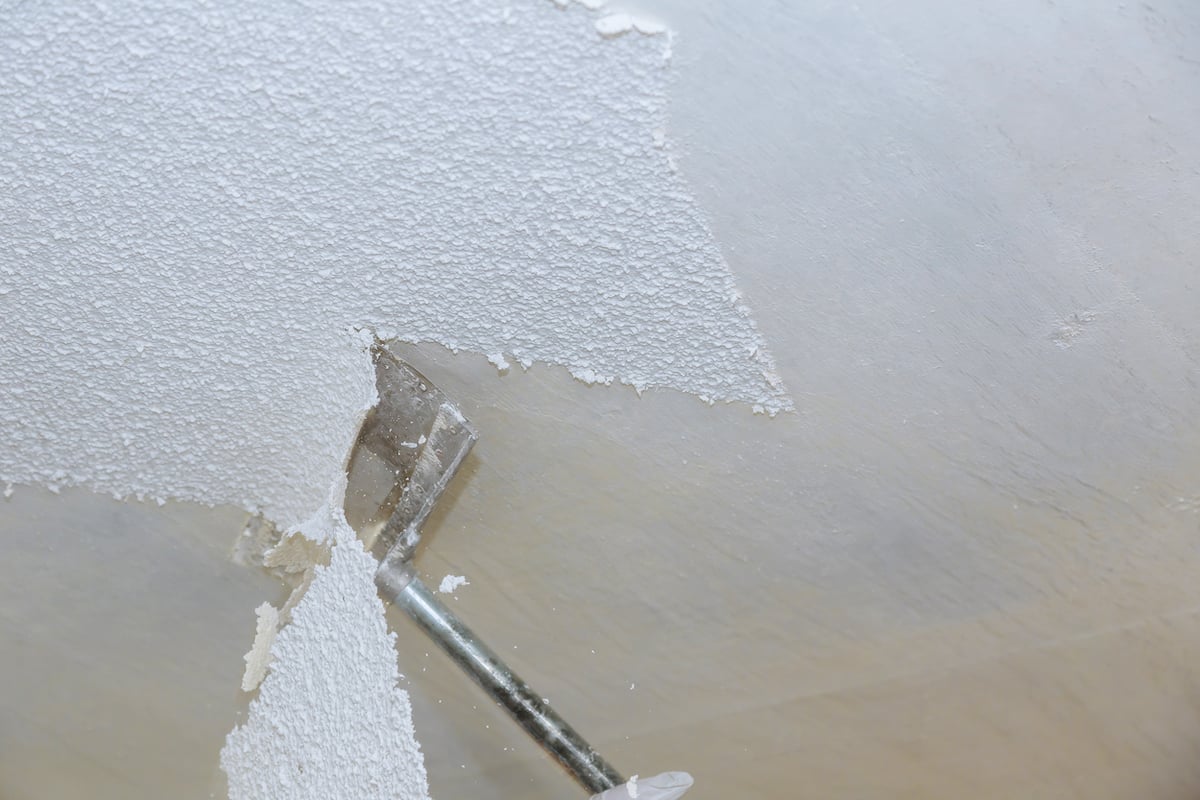During the 1970s, home building picked up on the idea of a cheap but effective way to reduce sound travel from one floor to the next: popcorn ceilings. Essentially, after the drywall was installed, a finisher would come in with a plaster mix and spray on the ceiling drywall for a bit of a lumpy effect. The disparate clumps and bumps not only created a texture to an otherwise flat-looking ceiling, they also helped break up sound waves. After being spray-painted in white, the ceiling texture essentially blended with the rest of the room to produce a finished look. Popcorn ceilings were such a common approach, entire home subdivisions had cookie-cutter ceiling work done by teams on new homes.
A BAD MEMORY FROM THE PAST
Today, popcorn ceilings are like sheet vinyl on flooring, relics of the 1970s decade and almost a trigger for a negative gut reaction from anyone who lived in that time period, particularly as a kid. Worse, prior to 1978, some of the material used to create the popcorn ceiling also included asbestos under the idea that it would improve safety and increase fire resistance (disregarding the fact that asbestos is extremely hazardous to breathe once airborne).

LEVERAGE FOR A BUYER, VULNERABILITY FOR A SELLER
It’s no surprise that anyone in modern times coming into a used home as a new buyer and owner will likely want to have the popcorn ceiling texture completely removed and redone. In some cases, during a buyer’s market, some prospects will actually want the seller to pay for the work to sell the home quickly.
Sellers should expect, at a minimum, that the issue will be used to argue for a lower price, at least in a normal market or where there is competition to secure a buyer. Only during a seller’s market will the presence of the popcorn ceiling pretty much be a non-issue for a quick sale.
While it might seem tempting to just have the owner scrape the ceilings and repaint them, it’s best to have a professional take care of the removal in a clean process. Especially if the home is older than 1978, the work could be hazardous and could require specific steps for proper mitigation.
Lisa Merritt is a Broker with Nest Realty Raleigh-Durham-Chapel Hill. Having traveled around the world multiple times, there is no place Lisa would rather call “home” than Raleigh-Durham-Chapel Hill.
Written by Lisa Merritt on October 15, 2021
-
Paused Your Moving Plans? Here’s Why It Might Be Time To Hit Play Again
Last year, 70% of buyers abandoned their home search – and maybe you were… Continue reading -
4 Things To Expect from the Spring Housing Market
Spring is in full swing, and the housing market is picking up… Continue reading -
Buying Your First Home? It’s Okay To Feel Nervous
Buying your first home is exciting, but let’s be real – it… Continue reading -
Should I Buy a Home Right Now? Experts Say Prices Are Only Going Up
At one point or another, you’ve probably heard someone say, “Yesterday was the… Continue reading



